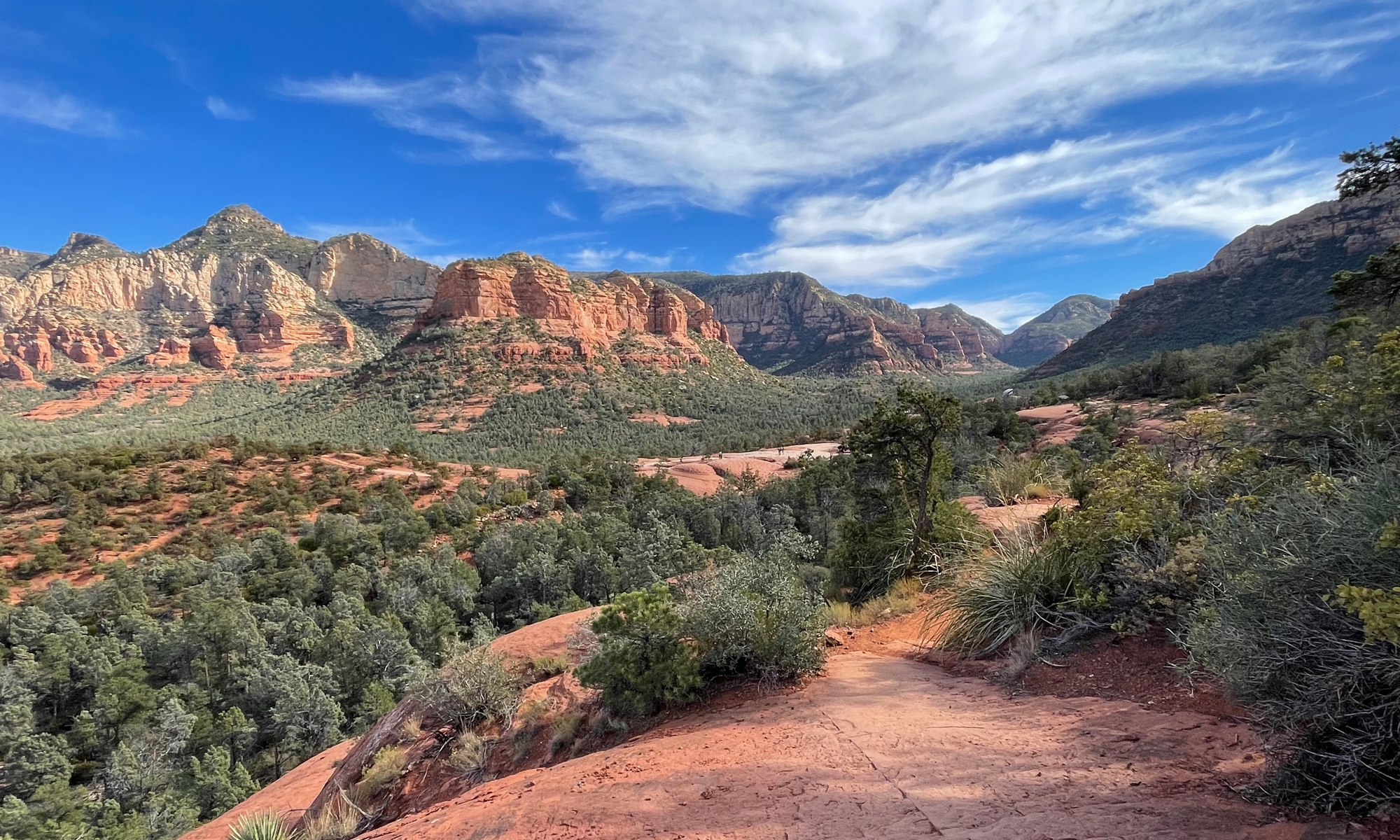The last stop of the day (in the park) was the Midway Geyser Basin. There are actually a few features at the Midway Geyser Basin, but the granddaddy of them all — and Hubby’s favorite — is the Grand Prismatic Spring. At about 300 feet across, Grand Prismatic is the largest hot spring in Yellowstone. It’s also considered to be the third largest in the world (there are two larger hot springs in New Zealand).
Grand Prismatic sits atop a wide, spreading mound. The water flows evenly on all sides and has formed a series of small, step-like terraces. Grand Prismatic is named for its wide variety of colors (best experienced from the air, as shown in the photo below).

That line across the lower left of the frame is the boardwalk. Those dots on the line are people. It’s really quite big.
As described by YellowstoneNationalPark.com, “The colors begin with a deep blue center followed by pale blue. Green algae forms beyond the shallow edge. Outside the scalloped rim a band of yellow fades into orange. Red then marks the outer border. Steam often shrouds the spring which reflects the brilliant colors. Grand Prismatic discharges an estimated 560 gallons per minute.”
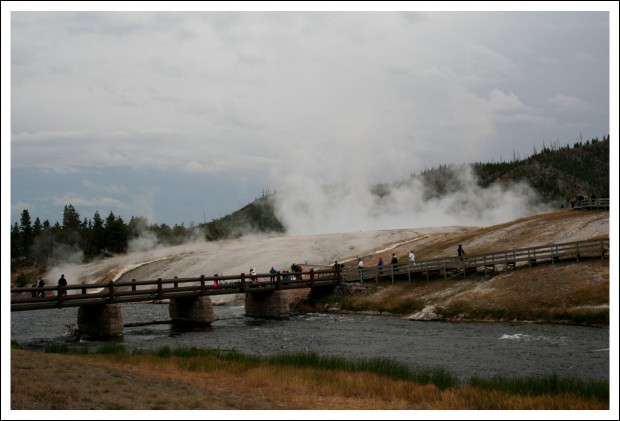
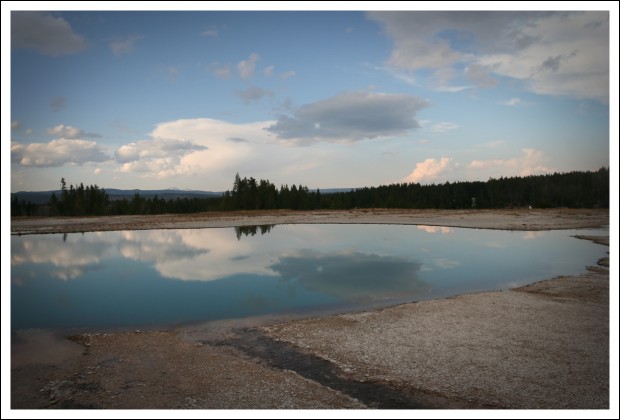
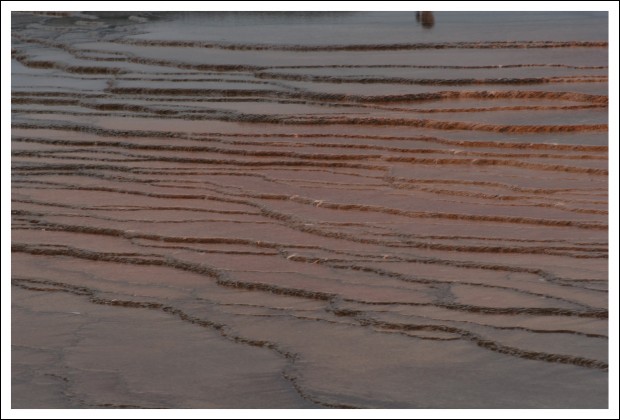
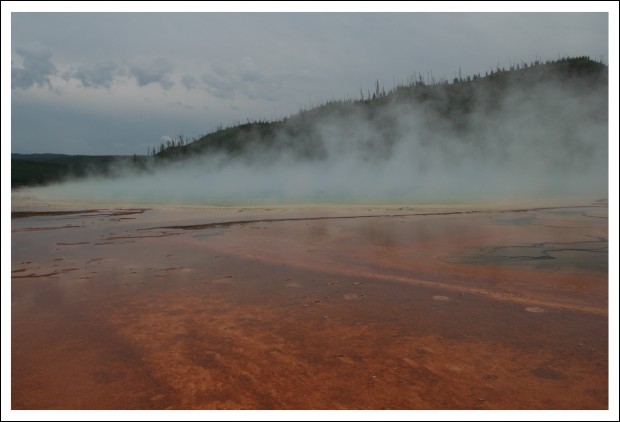
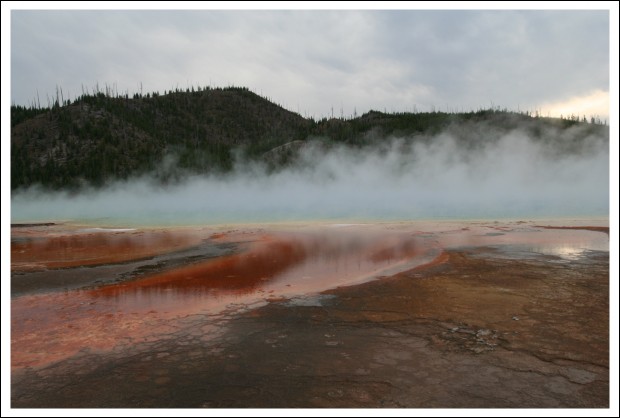
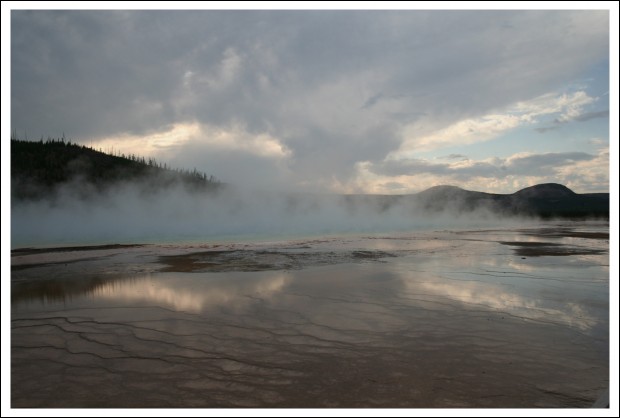
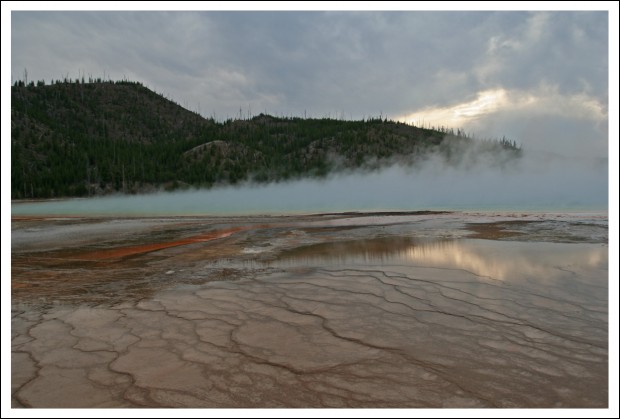
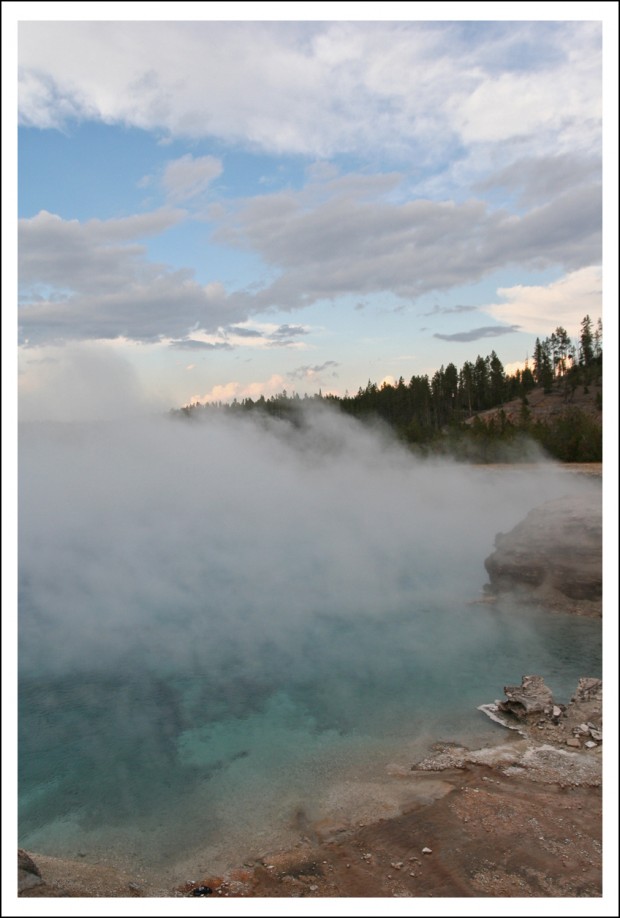
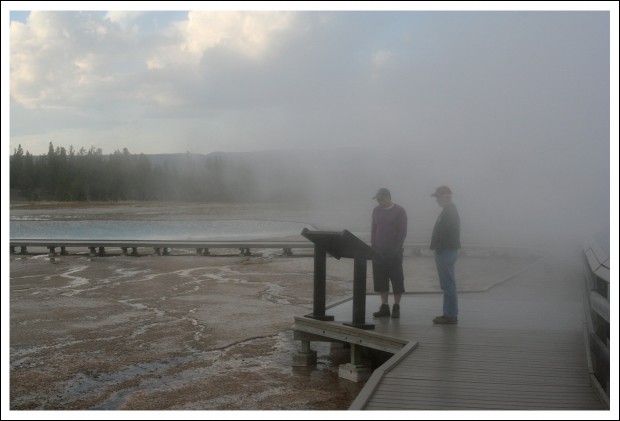
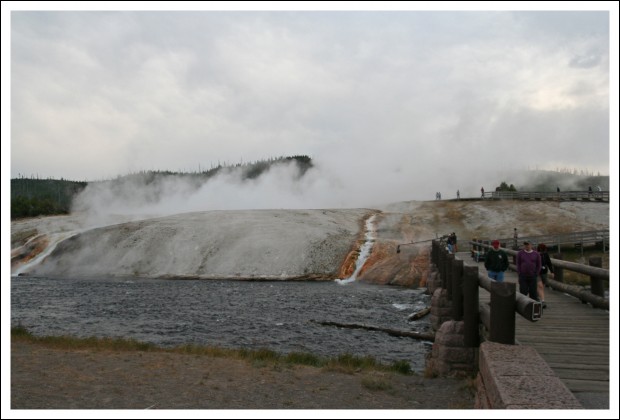
I’m not sure why that one is Hubby’s favorite, but it is. Maybe it’s the size? Or the colors? Perhaps it’s how, depending on wind direction, you can be completely enveloped by fog.
It was a very long, but very good day. One of many on a vacation filled with amazing stuff. Including fabulous company. We couldn’t have asked for better travel companions. We’ll soon have to start planning our next big trip.
Any guesses where we might be going?
